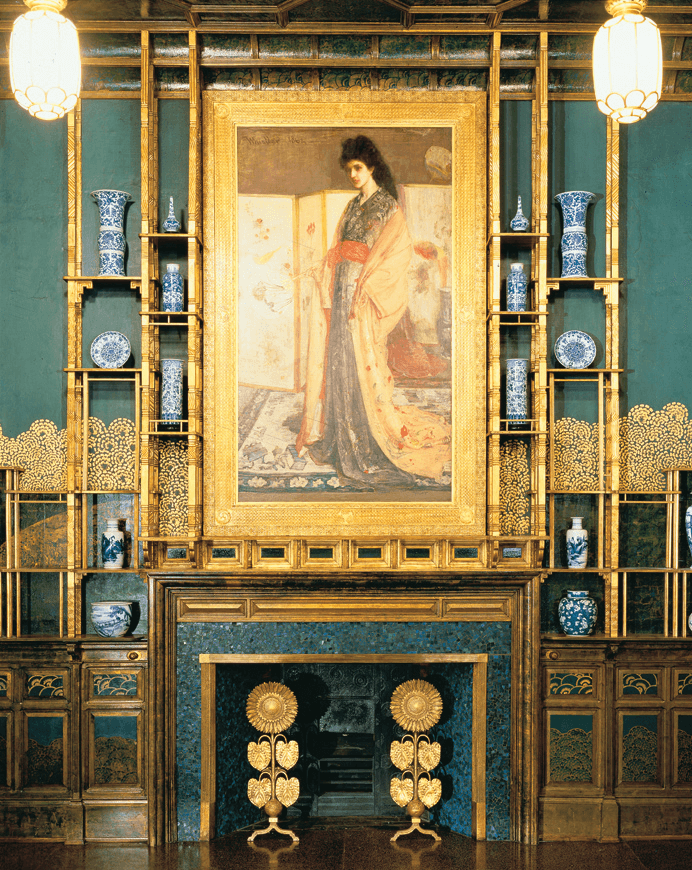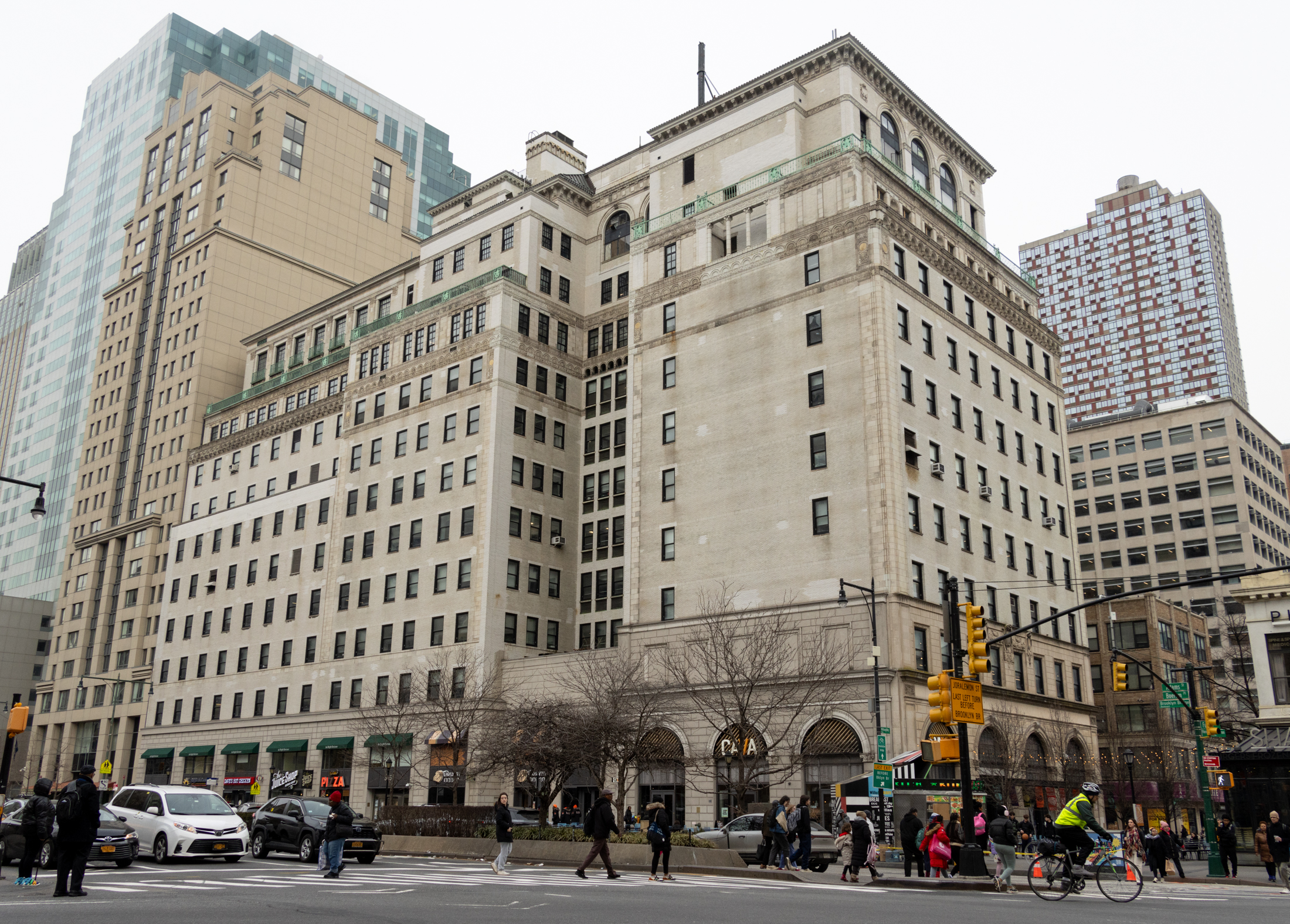Feast Your Eyes on the Luxurious Beauty of Aesthetic Movement Design
The Aesthetic Movement was one of the most important social movements of the late 19th century. In Brooklyn, we see its influences everywhere — both on the exteriors and interiors of our period homes and buildings.

Dante Gabriel Rossetti at 16 Cheyne Walk by Henry Treffry Dunn. Painting via Wikipedia
The Aesthetic Movement was one of the most important social movements of the late 19th century, yet most people are not aware of it at all. As far as our Brooklyn neighborhoods are concerned, we see the movement’s influences everywhere, both on the exteriors and interiors of our period homes and buildings.
The Aesthetic Movement, as discussed today, is mostly seen as a decorative or artistic phase of the Victorian era. But it was much more than that. Like many of the social and artistic trends of the time, the movement started in England, and ran roughly from 1870 to 1900.
If the Aesthetic Movement had a theme, it would have to be art for art’s sake. The writers, poets and cultural leaders of the time asserted that one should live surrounded by beauty — in beautiful rooms filled with beautiful things. This was the time when decorative arts rose to symbolize the height of our striving society, and they have remained there ever since.

The Aesthetic Movement was inspired by Japanese art and design.
The greatest influence of the movement occurred when Japan opened up to Western trade in the mid 1800s, fueling a mania in both England and the U.S. for Japanese design, art and goods.
The delicate and asymmetrical art of Japan was a revelation to Western audiences hungry for something different, and the designers of the Aesthetic Movement quickly became fascinated with these new shapes and motifs.
Leaves and flowers, butterflies, birds and other natural themes joined with the rectilinear shapes of Japanese furniture and architecture. Designer Charles Eastlake was heavily influenced by Japanese culture and design — reinterpreting them in his American Eastlake furniture and interior woodwork.

Wallpaper in Japanese patterns was also in vogue, bringing colors and designs not seen before into the home. In furniture, Japanese-style ebonized and lacquered pieces — sometimes gilded — were popular, as were marquetry and painted surfaces. It was an age of amazing, elaborate surfaces.
The Aesthetic Movement was the precursor of the Arts and Crafts Movement, which, in America, was highly influenced by Japan, especially on the West Coast. But where Arts and Crafts valued simple beauty, the late Aesthetic Movement did not — it soon ushered in a robber-baron style of luxurious excess.

The Aesthetic Movement in Brooklyn
At the time, many Brooklynites had more money to spend on the fashions of the day. No well-to-do Brooklynite could escape the Aesthetic Movement’s pervasive influence, and they built and decorated accordingly. The impact of the style’s natural motifs can still be seen in the exterior incised stonework of Neo-Grec Brooklyn brownstones.
Inside Brooklyn homes, the Movement inspired iridescent jewel tones, warm woods, patterned parquet floors, marquetry furniture, Japanese-style patterns on walls and dishes, butterflies, peacocks and ginkgo leaves on many surfaces, and yards of velvet and other rich fabrics.
Inside what looked like relatively conservative row houses was a cacophony of color, texture, materials and merchandise galore. The end of the 19th century — the Gilded Age — was a time of great excess, much of it expressed in the homes of Brooklyn.
Read more about how the Aesthetic Movement shaped Brooklyn’s interiors.

This story has been edited and updated since its initial publication.
Related Stories
Walkabout: Aesthetically Speaking, Part II
The Luxurious Wedding and Remarkable Home of Great Brooklyn Architect Montrose Morris
Queen Anne Style: America’s Flamboyant and Fantastic Architectural Melting Pot
Email tips@brownstoner.com with further comments, questions or tips. Follow Brownstoner on Twitter and Instagram, and like us on Facebook.
[sc:daily-email-signup ]








I don’t know where that sweet green shade will end up, Mopar. I’m torn between keeping it for myself in my yarn room and putting it where everyone can enjoy it.
Hi Montrose! Love this article.
Would not include Beardsley either — he was Art Nouveau. Nor Housman. I’ve just never seen him linked with this tradition.
I would include the painter William Merrit Chase. Also, the Aesthetic Movement made a great cult of the poets, so while Tennyson might not himself been part of the Aesthetic Movement, its proponents certainly idolized him, and “Idylls of the King” was a big fad.
FWIW, happened to be reading “Creating the Artful Home: The Aesthetic Movement” by Karen Zukowski, and she says Queen Anne brick, Stick, Painted Ladies, and Romanesque Revival architecture are all linked to the Aesthetic Movement.
Minard, often stone is refaced and wood trim removed and covered in siding, so these Eastlake and other details vanish.
Sorry, epkwy, one of my sources for general overview material was Wiki, and you get what you pay for. 🙂 They listed Housman and Waugh. While I do have a decent education, I have to admit my dates on English war poets and writers are shaky. Upon calm, rational thought, not trying to pound out an article, he would have been a bit later. Thanks for pointing that out. Now, if you could write to Wikipedia…….
You go, Mopar! Minard…..you old Calvinist, you!
I have been inside a very impressive Neo-Grec townhouse in Bushwick, close to the brewers/doctors/millionaires row. Apparently built around the 1870s or so. Looks like any plain brick rowhouse from the outside.
What about those asymmetric modern Romanesque Revival Victorian brick architect designed houses that dot Park Slope? Is that some kind of late 80s-90s hybrid-offshoot bridging Aesthetic Movement and Edwardian Arts & Crafts? Also, you know the JP Morgan mansion on 5th Ave was the height of Aesthetic Movement style, as was the famous Herters Brothers decorating and furniture company. I doubt they were doing much opium or even reading a lot of poetry.
Art Nouveau is not the same as Aesthetic Movement. Minard, maybe not everyone had a Turkish “cozy corner” with an opium pipe and a fur piece, but the Aesthetic Movement was so pervasive as to be banal — perfect examples are the secondary color schemes, sunflower motifs, transferware fireplace tiles, bric-a-brac shelves, and tripartite division of walls into dado, wall, and freize. Neo-Grec and Eastlake are both variations. There were ridiculous novels for young ladies with Aesthetic Movement covers and ludicrous, sentimental plots. The stuff was positively everywhere, like beards and bell bottoms in 1974.
There definitely are some houses in Park Slope that show the influence of the Aesthetic Movement. Maybe four or five. They have somewhat asmmetrical facades and very very watered-down Art Nouveau touches. But sadly, I think Brooklyn was very conservative style-wise and at least ten years behind the times, on purpose. Of course rich ladies would buy fancy silver serving pieces at Tiffanys or Eastlake dishes with Japanese-like designs, but the place just was not a hotbed of stylistic daring. San Francisco on the other had was caught up in the movement big time. I’m not dissing Brooklyn, or the stolid burghers who built it and set the tone, it was what it was.
Austrian Secessionism was not that big here either. Art Nouveau practially non-existant. Brooklyn was deeply American, Puritan, Northeastern, Protestant. By that I mean the power structure. The folks who by and large built the houses and lived in them. They did not take a quick liking to “opium-laced artistic Nirvana”.
Wow. That green lampshade might have been for a “student” lamp, e.g. an oil (kerosene) lamp for reading. The green was supposed to be easy on the eyes. Are you going to use it in your library?
Thank you MM — really helpful insight as I try to sort out the decorative styles in our home, and which influences to draw upon as we restore and decorate. Our electricians found a forest green glass lampshade squirreled away somewhere with frosted patterns of Japanese lanterns on them. I now see the context for it! Keep it coming.